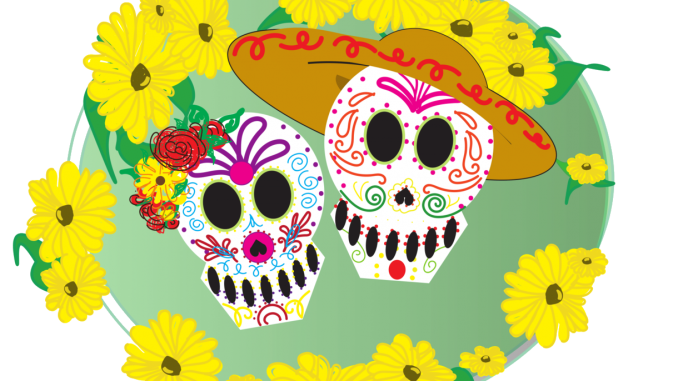
Temple University students are preparing to celebrate Dia de Los Muertos, or the Day of the Dead, on Friday and Saturday.
The holiday has gained popularity in American culture through films like Pixar Studio’s “Coco” and sugar skull-themed merchandise, the Los Angeles Times reported, but it is not another iteration of Halloween, as some students and scholars explained. It is a time to remember loved ones who have passed on.
Maria Rey, a master’s of social work student, has celebrated Dia de Los Muertos since she was a young girl in Mexico. She said although the holiday seems similar to Halloween traditions, it was celebrated very differently when she was growing up.
Rey remembers baking pan de los muertos, or the bread for the dead, and the favorite foods of relatives who died. She and her family also gathered things deceased relatives enjoyed, like their favorite alcohol, cigarettes and other trinkets. As a child, she decorated sugar skulls with bright colors and labeled them with the names of the deceased.
People would put these items in front of the person’s picture on ofrendas, or altars, they prepared at home, Rey said. Some would go to the local cemetery with the items and stay the night while their loved ones “visited.”
Now, while living in Philadelphia, she still celebrates the tradition.
“I don’t have all the traditional items I would have in Mexico, but I put the pictures of all my loved ones that have passed away, and I put out candles and flowers,” Rey said. “I do pray and hope they are happy in the afterlife.”
Prayer is part of the holiday because the celebration itself is a blend of indigenous and Catholic traditions, said Michael Hesson, an associate professor of anthropology. Historically, the holiday was celebrated by the Aztecs as “a month-long ceremony devoted to the dead,” but when the Spaniards invaded they tried to impose Catholicism on the Aztecs.
“What they found was that didn’t work and then people really clung to their beliefs, and … what they kind of resorted to was something of an assimilation,” Hesson said.
Terry Rey, chair of the religion department and Maria Rey’s husband, said this phenomenon is known as syncretism, the fusion of diverse religious beliefs and practices, according to Encyclopædia Britannica. The Catholic Church was able to use this practice in Mexico, Haiti, Africa and anywhere such traditions honoring the dead existed.
Olivia Cole, a junior earth and space science teaching major, acknowledged this history as the root of the celebrations her family has on Dia de los Muertos.
Usually the day after Halloween, Cole’s home becomes “colorful and bright and beautiful,” she said. Cole’s home brims with delicious smells of traditional Mexican dishes, like pozole and mole. Her tío, or uncle, from Houston, Texas, sends pan de los muertos, Cole’s favorite holiday treat.
Cole’s family also makes tissue paper flowers that they place with food, candles and pictures on the mantle in their home to create their ofrenda for her loved ones, like her abuelos, or grandparents, and another tío who has passed away, she said.
“We use this as a time of reflection,” she added.
As she’s grown up, Cole said she has noticed that the increased awareness of the holiday has made it easier for her and her family to celebrate in the United States.
“We have access to more things we need, like we find mole in the grocery stores now more often. There’s people who paint their faces for Dia de Los Muertos, and the craft stores took notice,” she added.
Maria Rey said she sees this increased visibility as a good thing.
“I do love that Dia de Los Muertos things are becoming mainstream in the United States because that can only be positive for my people and my culture to feel that we are part of mainstream society,” Maria Rey said.
The holiday teaches people to see death as “part of the circle of life,” and a way to connect the past with future generations, Maria Rey said. This is also why she teaches her own children to observe the holiday, to both pass on tradition and give them a way to remember her when she dies.
“I believe that when people pass away, they’re not gone, but they live in you, and you have to honor and remember them,” she added. “As long as you honor them and remember them and talk about them, they’re still alive, they’re still with you, always.”


Be the first to comment